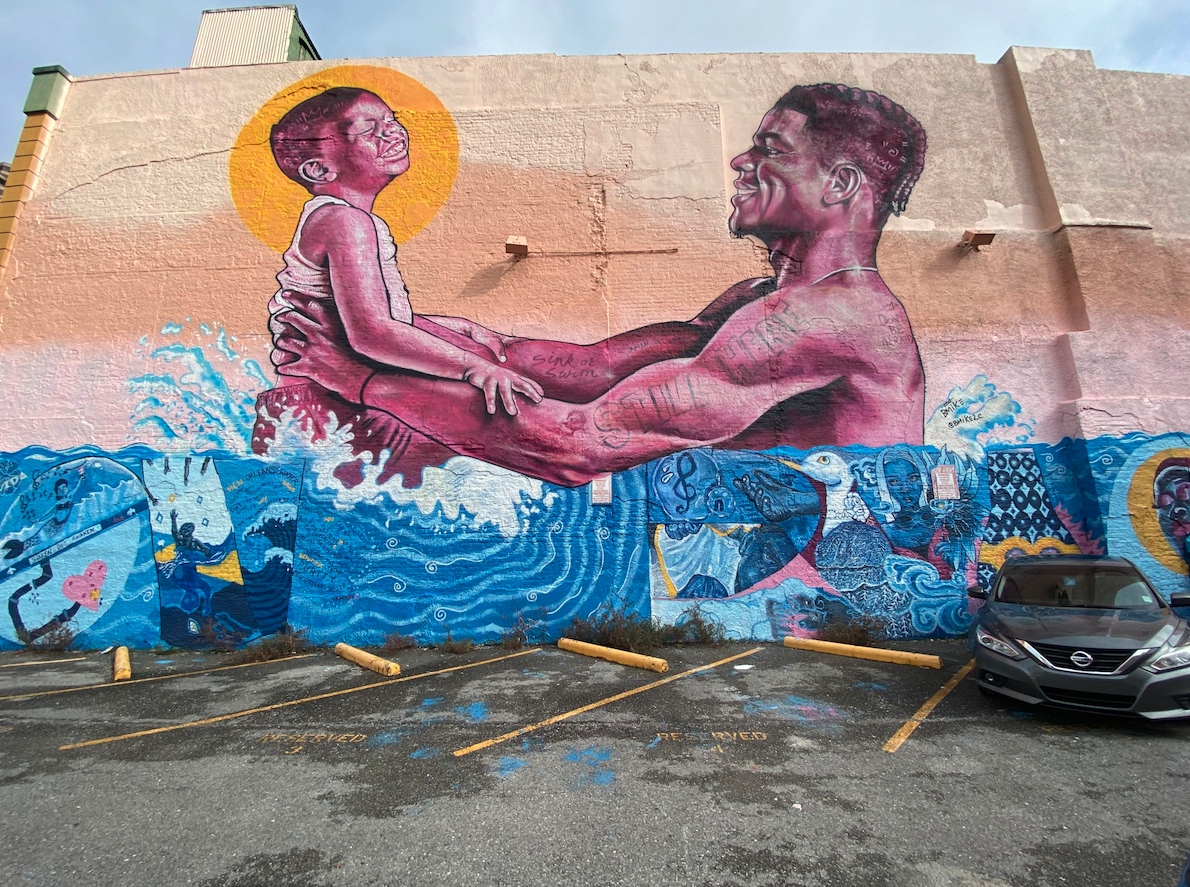Rachel Abrahams did semester-long research with Arts Council New Orleans after working with the art market manager this past summer.
This might be the headiest of questions, but it is what I’ve though about from the Summer of 2022 until the writing of this blog post. The Arts Council of New Orleans (ACNO) holds up art to the public and residents of New Orleans. From commissioning murals to holding a twice monthly Art Market in Marsalis Harmony Park and City Park. Our state and local government, through policy and legislation, holds up art-presenting and the possibility of art-making as a full-time job. We, the people of New Orleans/Bulbancha uphold and support necessary communal art and cultural experiences but specific societal pressures prevent some of us access to the art we support.
As a Graduate Research Assistant with the Arts Council of New Orleans, my job was to research and discover information to move forward ACNO’s initiative of creating a Public Art and Private Development Partnership Program. My research has been fruitful and engaging. It was exciting to see the way other small cities regard art and the people who make it. I was surprised to enjoy looking through the Municode Library and other deeply legislative documents. Working as a performer years ago, I never would have envisioned myself getting down to the brass taxes of how legislation that affects me was established and yet, here I am, an artist, a self proclaimed catalyst, and someone trying on the role of Changemaker, trying to figure out how we got here and how to make movement towards sustainably equitable fixes.
Joan Didion said “A place belongs forever to whoever claims it hardest, remembers it most obsessively, wrenches it from itself, shapes it, renders it, loves it so radically that he remakes it in his image.” (The White Album, 1979). At face value, New Orleans/Bulbancha belongs to Weather, but we can’t question the Weather and ask it why or for advice. So whom does New Orleans belong to and where does its art and culture sit in this conversation? As a new(ish) resident to this city, I am outside what Joan Didion speaks of. I’m learning, seeing, and listening feels like the right place from which is any Changemaker should begin their journey. I investigated municipal codes, cultural plans, and nonprofits across multiple US cities checking in with Deputy Director Dr. Sarah Woodward at periodic intervals throughout the semester. There were two blaring challenges I found. The first is the lack of public art and private development programs in the US, especially in the Gulf South. The second is that public art can encompass many mediums if the local government says so. Defining what qualifies as public art is as unique to a city as its residents. New Orleans/Bulbancha is culturally rich – exorbitantly rich! When art is interwoven with culture, heritage, and place, do we need to say which part is art and which part is ephemera in order to protect it? Is it possible to reframe our expectations of what is worthy of titling ‘public’ art? This research has deeply informed how I want to move forward through the rest of my graduate experience and further on after graduation.
I’ve been learning through every turn of this research project about who I can be outside of a role as Performer, Artist, and Collaborator. When you tell someone you’ve spent a lifetime in the performing arts they understand skill and dedication and that’s about it. We have to prove ourselves and that our work is valuable every single day – especially in academia and at a Research 1 institution. My intersections have led me to feel that I am in the exact right place to fight alongside artists here in New Orleans/Bulbancha. Art makers and freelancers are consistently at odds with stability, consistency, and our creative practices. Art is proclaimed to be valuable and yet artists can barely make ends meet all over Louisiana and the US.
Devaluing an artist’s right to financial stability is enmeshed in the US’s capitalist and supremacist ideology. These might be problems for a future project but by apprenticing them now I was able to shift the way I considered my steps on the path forward. Tackling a problem. Tackling feels powerful but lacks staying power. Solving a problem upholds the status quo including broken systems and doesn’t consider the specialized needs of the people the solution will affect. Apprenticing a problem creates space for asking questions, values consideration, and allows for a new question or problem that will diverge from the original ask. Working in support of others has helped me find myself and who I want to be in this city. I’ve travelled and road tripped but always with a destination, a place to pause or a finite end. On my road to relocating to the South, Tulane is a pause and New Orleans/Bulbancha has always been the destination. I’m slowly beginning to figure out how supporting ongoing change for art in New Orleans will continue to help me grow confidently into the role of changemaker as I claim this city harder the longer I am here.




